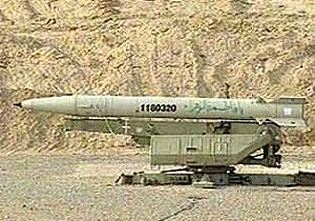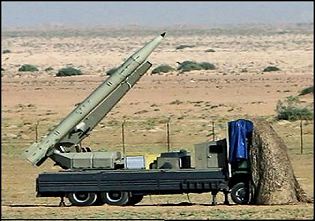|
|
|||||||||||||||||||||||||||||||||
|
Fateh-110 Fatah A-110 short-range ground-to-ground ballistic missile
|
|||||||||||||||||||||||||||||||||
|
|
|||||||||||||||||||||||||||||||||
|
|
|||||||||||||||||||||||||||||||||
|
a
|
|||||||||||||||||||||||||||||||||
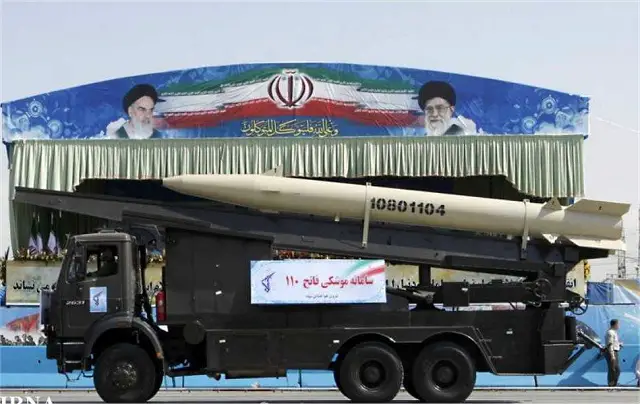 |
|||||||||||||||||||||||||||||||||
| The Fateh A-110 is a short-range, road-mobile, solid-propellant ballistic missile based on the Russian made missile R-65 FROG, but other sources said it is a copy of the Chinese DF-11. It is most likely a modified version of the unguided Zelzal-2 ground-to-ground missile, with the addition of control and guidance systems.1 The Fateh A-110 is designed to replace many of the aging Scud systems currently used in the Iranian armed forces. Iran began developing the Fateh A-110 in 1997. The first test flight of the Fateh A-110 took place in May 2001, with a second the following September of 2002.3 A third test was recorded in February 2003. A fourth test was successfully completed during the second Holy Prophet military exercise in November 2006. The Iranian Revolutionary Guard successfully tested the Fateh in January of 2007 during an annual war game. A fifth successful test was completed in September 2007 alongside the Qadr-1 and the Shahab-3. Additional test flights have probably taken place. During its tests, the Fateh A-110 was fired from a fixed launcher similar to the one used by the Russian S-75 Guideline surface-to-air missile. However, it is more likely that Iran has designed a launch vehicle to make Fateh A-110 road-mobile. In September 2010, the Iranian Defense Ministry announced that army units are equipped with the third generation of Fateh-100 missile with an upgraded range of 300 km. The Fateh A-110 was designed to replace the old Russian-made ground-to-ground ballistic missile Scud systems currently used in many countries in the Middle East and also in Iran. The Fateh-110 was also exported to Syria. |
|||||||||||||||||||||||||||||||||
| Variants | |||||||||||||||||||||||||||||||||
| - Fateh-110: First variant. With a range of 200 km. - Fateh-110/II or Fateh A-110A: Second Generation Announced in 2004. It has a range between 160 and 210 km, but it is possible that Iran will add an extra booster to increase the range of the missile to 400 km. - Fateh-110/III or Fateh 3 A-110B: Third Generation Announced in 2010. The operational range of 250 km in place of 210 km for Fateh-110. It is expected that the A-110B will have a slightly reduced payload of 480 kg and an accuracy of 250 m CEP. - Khalij Fars: is an Anti-ship ballistic missile based on Fateh-110. Unveiled in 2011. - M-600: Syria has manufactured its own version of the Fateh-110, known as the M-600 |
|||||||||||||||||||||||||||||||||
| Technical Data | |||||||||||||||||||||||||||||||||
| Back to top | |||||||||||||||||||||||||||||||||
|
|||||||||||||||||||||||||||||||||
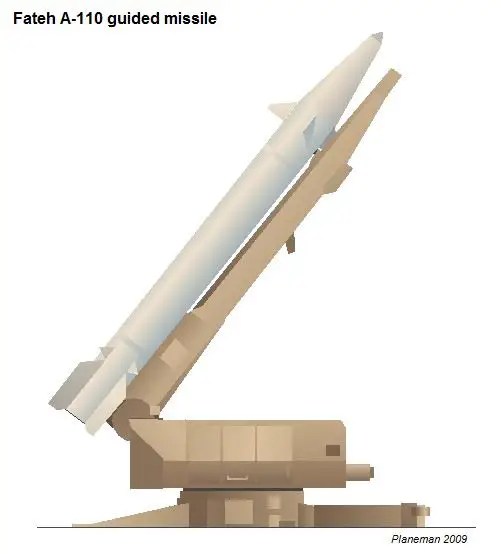 |
|||||||||||||||||||||||||||||||||
|
|||||||||||||||||||||||||||||||||
| Back to top | |||||||||||||||||||||||||||||||||
|
a
|
|||||||||||||||||||||||||||||||||
|
|
|||||||||||||||||||||||||||||||||
- Home
- News
- Defence News
- Defence Exhibitions
- LIMA 2023
- IDEX 2023 exhibitors vistors
- AUSA 2022 News
- MSPO 2022 News
- ADEX 2022 News
- Defense News France
- Eurosatory 2022
- DSA 2022 News Official Online Show Daily
- WDS Saudi Arabia
- UMEX 2022 News
- Defense Exhibitions 2021
- IDEX 2021 exhibitors vistors
- ShieldAfrica 2021 exhibitors vistors
- IDEF 2021 exhibitors visitors
- SOFINS 2021 News Online Show Daily
- DEFEA 2021 Exhibitors - Visitors
- Army-2021 News Show Daily
- MSPO 2021 News Official Online Show Daily
- AUSA 2021 News
- DSEI 2021
- Partner 2021 News
- Milipol Paris 2021
- EDEX 2021 News
- ExpoDefensa 2021
- FEINDEF 2021 News
- Defense Exhibitions 2020
- Defense Exhibitions 2019
- GDA 2019 News Official Show Daily
- ShieldAfrica 2019 Visitors Exhibitors Information
- IDEX 2019 Visitors Exhibitors Information
- Enforce TAC 2019 News Show Daily
- MILEX 2019 News Online Show Daily Minsk Belarus
- SITDEF 2019 Visitors Exhibitors Information
- SOFINS 2019 News Online Show Daily
- LAAD 2019 News Online Show Daily
- IDEF 2019 News Online Show Daily
- FEINDEF 2019 News Online Show Daily
- IDET 2019 News Online Show Daily
- ISDEF 2019 Visitors Exhibitors Information
- Partner 2019 News Online Show Daily
- Army-2019 News Russia Online Show Daily
- Milipol Paris 2019 News Online Show Daily
- ExpoDefensa 2019 Exhibitors - Vistors - Information
- BIDEC 2019 Exhibitors Visitors Information
- AUSA 2019 News Online Show Daily
- DSEI 2019 exhibitors visitors information
- MSPO 2019 Exhibitors Visitors Information
- Defense & Security Thailand 2019 News Official Show Daily
- Defence Exhibitions 2018
- BSDA 2018 News Online Show Daily
- KADEX 2018 Visitors Exhibitors Information
- SOFIC 2018 News Online Show Daily
- Warrior Competition 2018 KASOTC News
- DefExpo 2018 News Show Daily
- DSA 2018 Visitors Exhibitors Information
- SOFEX 2018 Visitors Exhibitors Information
- Enforce Tac 2018 News
- Singapore AirShow 2018 News
- Shot Show 2018 News Show Daily
- IAV 2018 News Show Daily
- UMEX 2018 UAE News
- Eurosatory 2018 Visitors Exhibitors Information
- AirShow China 2018 News Online Show Daily
- IndoDefence 2018 Visitors Exhibitors Information
- IDEAS 2018 Visitors Exhibitors Information
- EDEX 2018 Visitors Exhibitors Information
- AUSA 2018 News Online Show Daily
- AAD 2018 Visitors Exhibitors Information
- DVD 2018 News Online Show Daily
- ADEX 2018 Visitors Exhibitors Information
- DX Korea 2018 Visitors Exhibitors Information
- Army-2018 Russia News Online Show Daily
- MSPO 2018 Visitors Exhibitors Information
- Defence Exhibitions 2017
- ShieldAfrica 2017 News Exhibitors Visitors
- LAAD 2017 News Exhibitors Visitors
- IDEX 2017 News Exhibitors Visitors
- SOFINS 2017 News Exhibitors Visitors
- SITDEF 2017 Exhibitors Visitors News
- SOFIC 2017 Online Show Daily News - Report - Coverage
- IDEF 2017 News Visitors Exhibitors
- IDET 2017 Exhibitors Visitors News
- Partner 2017 Online show Daily News
- Army-2017 News Online show Daily
- MSPO 2017 News Visitors Exhibitors
- AUSA 2017 Online Show Daily News
- Expodefensa 2017 News Exhibitors Visitors
- Arms & Security 2017 Online show Daily News
- BIDEC 2017 News Visitors Exhibitors
- Defense & Security Thailand 2017 Official Online show Daily News
- Milipol Paris 2017 Online Show Daily News
- GDA 2017 Online Show Daily News
- ADEX 2017 South Korea Online show Daily News
- DSEI 2017 News Visitors Exhibitors
- Defence Exhibition 2016
- IDEAS 2016 News Visitors Exhibitors
- High Tech Port 2016 News Exhibitors Visitors
- Airshow China 2016 Online Show Daily News - Report - Coverage
- INDO DEFENCE 2016 Online Show Daily News - Report - Coverage
- AUSA 2016 Online Show Daily News - Report - Coverage
- ADEX 2016 News Visitors Exhibitors
- AAD 2016 Online Show Daily News - Coverage - Report
- Army 2016 News Exhibitors Visitors
- MSPO 2016 news visitors exhibitors
- Eurosatory 2016 News Exhibitors Visitors
- KADEX 2016 News Visitors Exhibitors
- SOFEX 2016 News Exhibitors Visitors
- Warrior Competition 2016 KASOTC Coverage - Report - News
- DSA 2016 News Visitors Exhibitors
- Defexpo 2016 Online Show Daily News
- Defexpo 2016 Official Online Show Daily News - Coverage - Report
- ISNR 2016 Online Show Daily News
- KIDEC 2016 news visitors exhibitors
- IWA 2016 Online Show Daily News
- Defence Exhibitions 2015
- Expodefensa 2015 News Exhibitors Visitors
- Milipol 2015 News - Report - Coverage
- AUSA 2015 Online Show Daily News - Coverage - Report
- Defense & Security 2015 News Visitors Exhibitors
- APHS 2015 News Exhibitors Visitors
- MSPO 2015 News Exhibitors Visitors
- RAE 2015 News Exhibitors Visitors
- DSEI 2015 News Exhibitors Visitors
- Partner 2015 Official Online Show Daily News - Coverage - Report
- IDET 2015 News Exhibitors Visitors
- SITDEF 2015 News Exhibitors Visitors
- IDEF 2015 News - Coverage - Report
- SOFINS 2015 News - Coverage - Report
- IDEX 2015 News Exhibitors Visitors
- ARMY 2015 Russia News Coverage Report
- Defence Exhibitions 2014
- IndoDefence 2014 News Information Exhibitors Visitors
- AirShow China 2014 news - coverage - report
- AUSA 2014 Show News Information Exhibitors Visitors
- IDEAS 2014 News Information Exhibitors Visitors
- ADEX 2014 Show News Information Exhibitors Visitors
- MSPO 2014 Show News Information Exhibitors Visitors
- AAD 2014 Show News Exhibitors Visitors Information
- Defexpo 2014 Show News Information Exhibitors Visitors
- Eurosatory 2014 Show News Information Exhibitors Visitors
- SOFEX 2014 Show News Information Exhibitors Visitors
- KADEX 2014 Show News Information Exhibitors Visitors
- CIDEX 2014 Show News Information Exhibitors Visitors
- IDEB 2014 Show News Information Exhibitors Visitors
- DSA 2014 Show News Information Exhibitors Visitors
- Defence Exhibitions 2013
- IDEX 2013
- IDEF 2013 Defence Industry Fair
- Partner 2013 news coverage report
- IDET 2013
- 14 July 2013 French army parade pictures
- Défilé militaire 14 juillet 2013 photos - vidéo
- FED 2013 Meeting - Forum Defence Industry
- LAAD 2013 defence exhibition
- RAE 2013 Russian Arms Expo News - Pictures - Video
- IAV 2013 Conference Exhibition
- SITDEF 2013 News Coverage Report
- SITDEF 2013 Show Daily News - Coverage - Report
- TADTE 2013 Show daily news coverage report
- MSPO 2013 Defence Exhibition
- AUSA 2013 U.S. Army Annual Meeting & Exposition
- DSEI 2013 Defence & Security Exhibition
- Milipol 2013 Internal State Security Exhibition
- Defence Exhibitions 2012
- Defence Exhibitions 2011
- ARG News
- Defense Web TV
- Defence News
- Defence Industry
- World Army Equipment
- Focus / Analysis
- Advertising
- Send Press Release
-
You are here:
- Home
- World Army Equipment
- Middle East
- Iran
- Missile Systems
Defense Breaking News


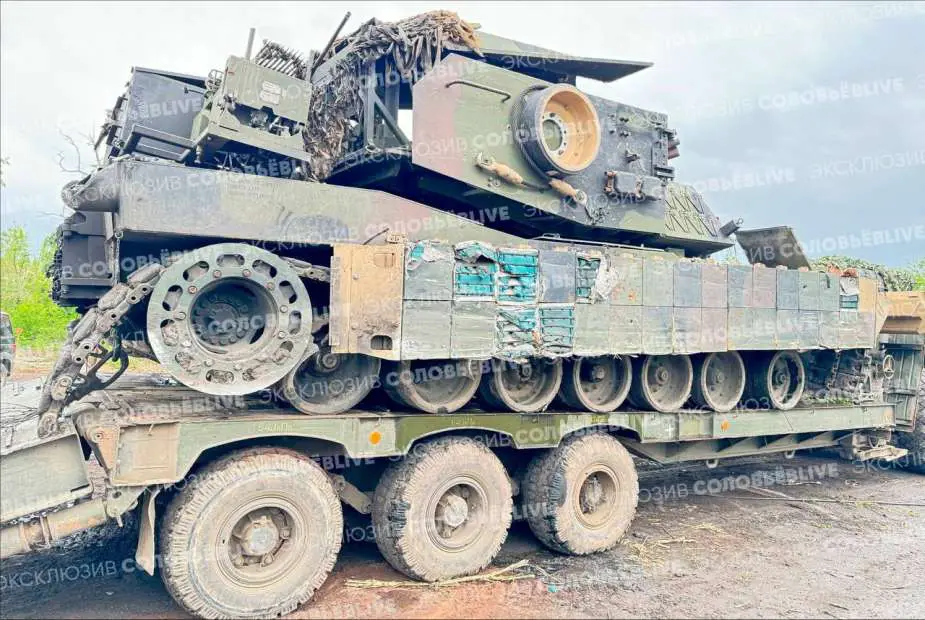
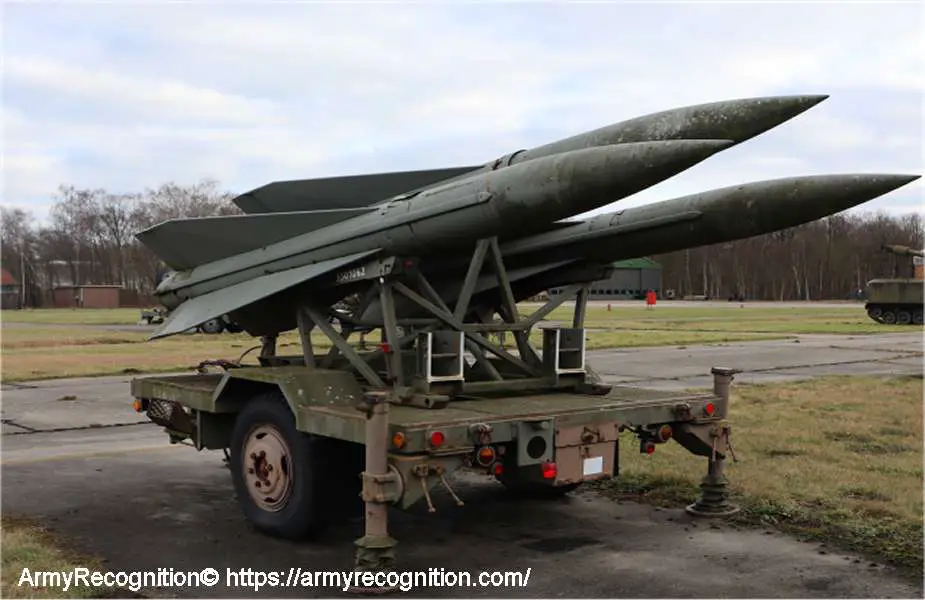
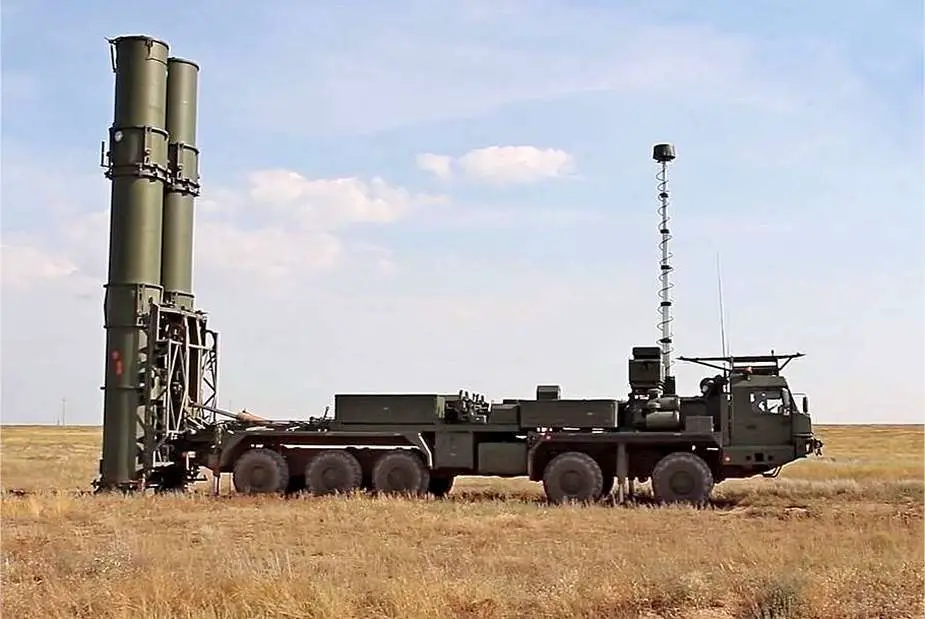
More In : Ukraine - Russia conflict war 2022
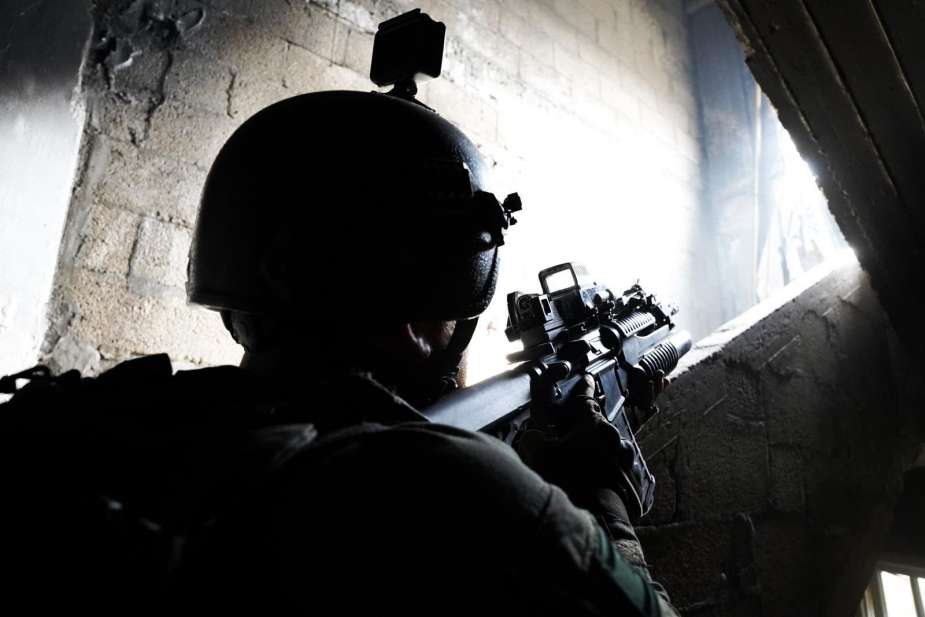
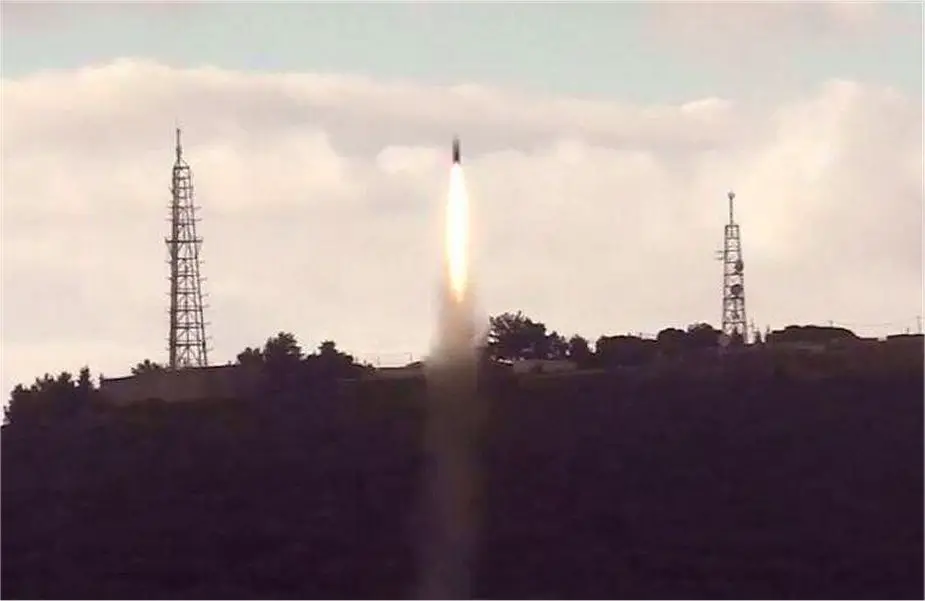
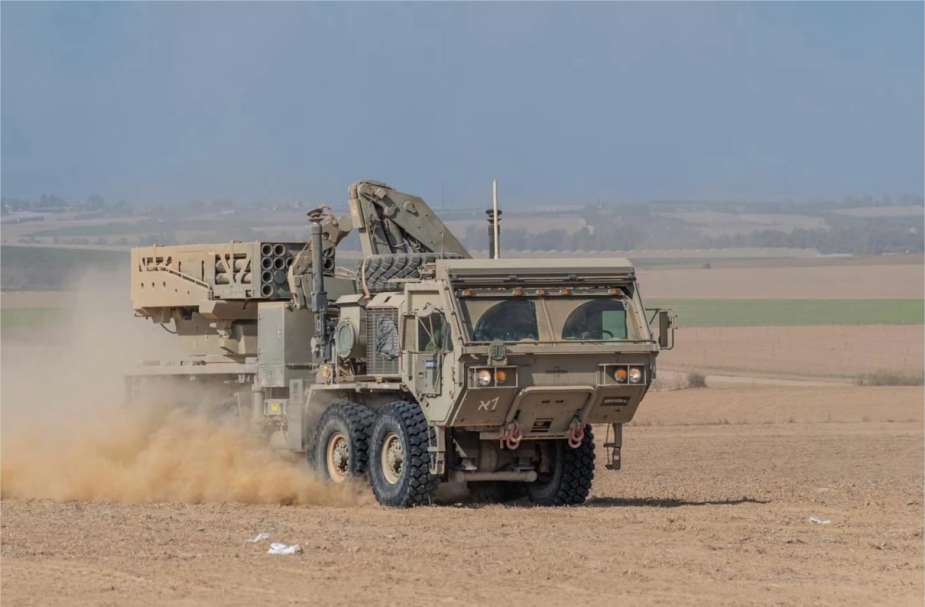
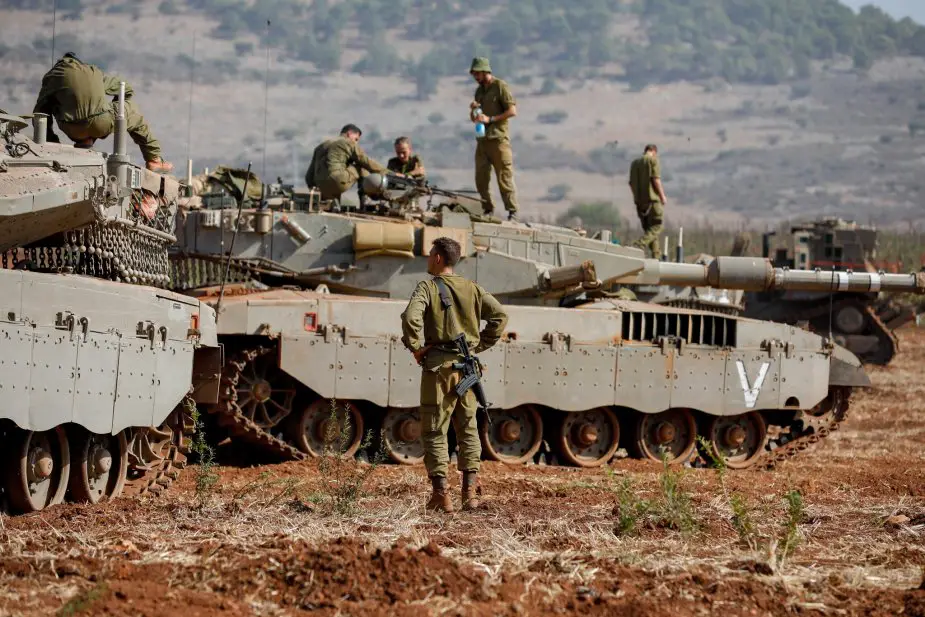
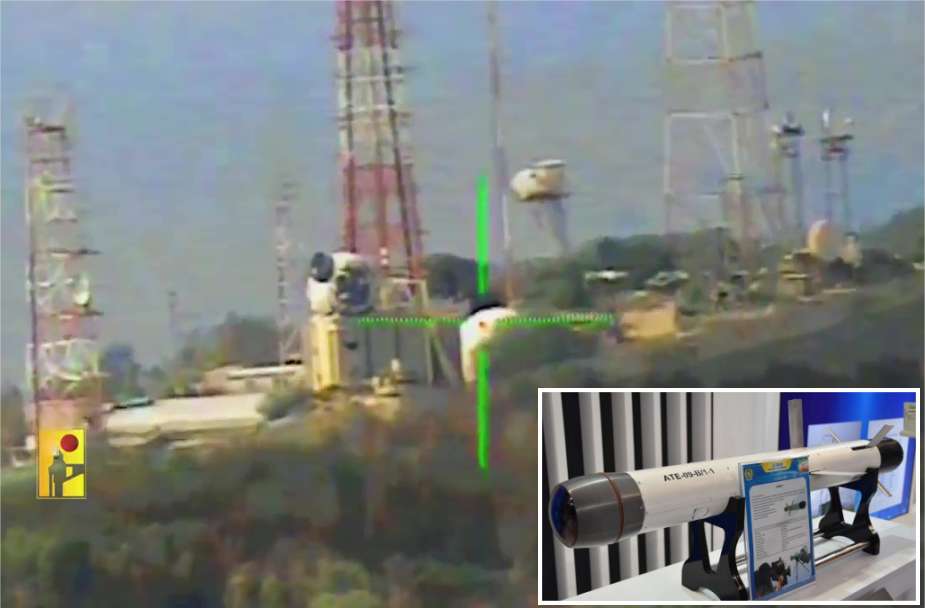
More In : Hamas Gaza - Israel War 2023
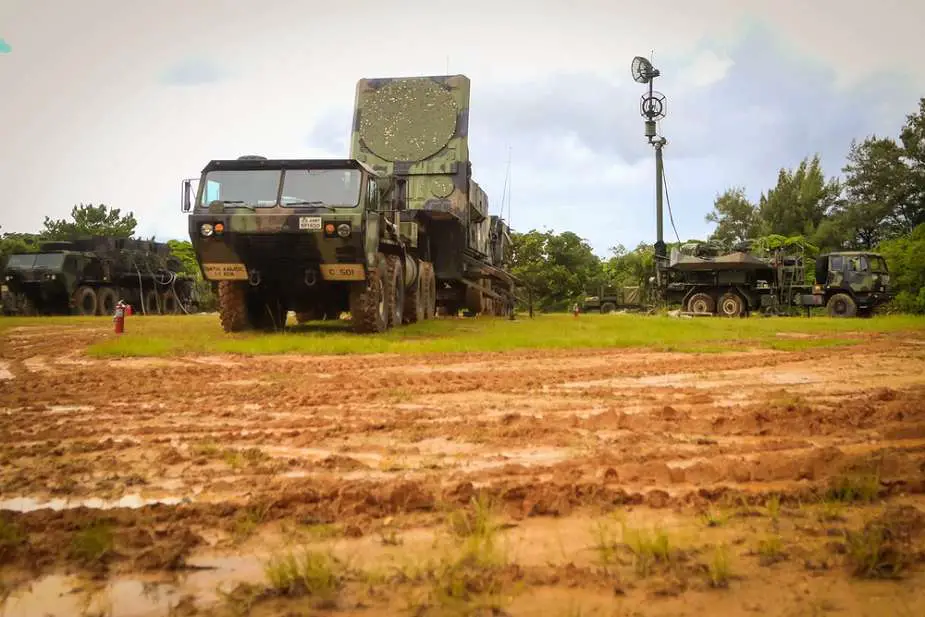
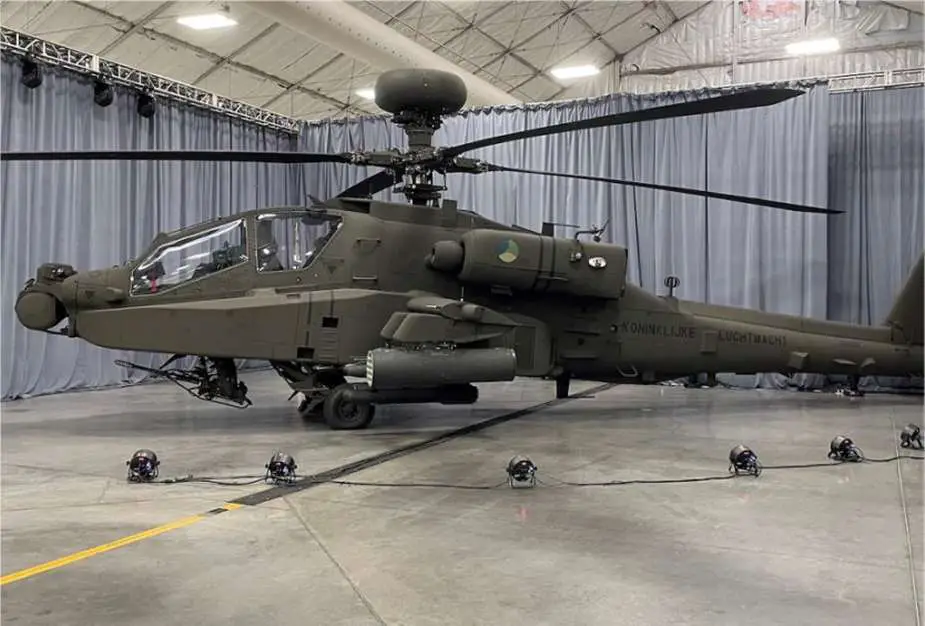

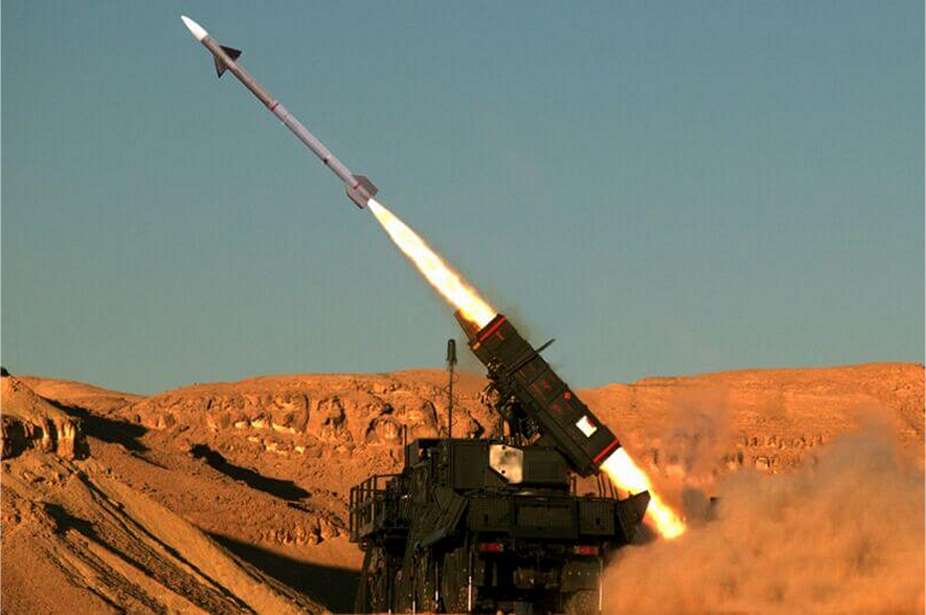

- Home
- News
- Defence News
- Defence Exhibitions
- LIMA 2023
- IDEX 2023 exhibitors vistors
- AUSA 2022 News
- MSPO 2022 News
- ADEX 2022 News
- Defense News France
- Eurosatory 2022
- DSA 2022 News Official Online Show Daily
- WDS Saudi Arabia
- UMEX 2022 News
- Defense Exhibitions 2021
- IDEX 2021 exhibitors vistors
- ShieldAfrica 2021 exhibitors vistors
- IDEF 2021 exhibitors visitors
- SOFINS 2021 News Online Show Daily
- DEFEA 2021 Exhibitors - Visitors
- Army-2021 News Show Daily
- MSPO 2021 News Official Online Show Daily
- AUSA 2021 News
- DSEI 2021
- Partner 2021 News
- Milipol Paris 2021
- EDEX 2021 News
- ExpoDefensa 2021
- FEINDEF 2021 News
- Defense Exhibitions 2020
- Defense Exhibitions 2019
- GDA 2019 News Official Show Daily
- ShieldAfrica 2019 Visitors Exhibitors Information
- IDEX 2019 Visitors Exhibitors Information
- Enforce TAC 2019 News Show Daily
- MILEX 2019 News Online Show Daily Minsk Belarus
- SITDEF 2019 Visitors Exhibitors Information
- SOFINS 2019 News Online Show Daily
- LAAD 2019 News Online Show Daily
- IDEF 2019 News Online Show Daily
- FEINDEF 2019 News Online Show Daily
- IDET 2019 News Online Show Daily
- ISDEF 2019 Visitors Exhibitors Information
- Partner 2019 News Online Show Daily
- Army-2019 News Russia Online Show Daily
- Milipol Paris 2019 News Online Show Daily
- ExpoDefensa 2019 Exhibitors - Vistors - Information
- BIDEC 2019 Exhibitors Visitors Information
- AUSA 2019 News Online Show Daily
- DSEI 2019 exhibitors visitors information
- MSPO 2019 Exhibitors Visitors Information
- Defense & Security Thailand 2019 News Official Show Daily
- Defence Exhibitions 2018
- BSDA 2018 News Online Show Daily
- KADEX 2018 Visitors Exhibitors Information
- SOFIC 2018 News Online Show Daily
- Warrior Competition 2018 KASOTC News
- DefExpo 2018 News Show Daily
- DSA 2018 Visitors Exhibitors Information
- SOFEX 2018 Visitors Exhibitors Information
- Enforce Tac 2018 News
- Singapore AirShow 2018 News
- Shot Show 2018 News Show Daily
- IAV 2018 News Show Daily
- UMEX 2018 UAE News
- Eurosatory 2018 Visitors Exhibitors Information
- AirShow China 2018 News Online Show Daily
- IndoDefence 2018 Visitors Exhibitors Information
- IDEAS 2018 Visitors Exhibitors Information
- EDEX 2018 Visitors Exhibitors Information
- AUSA 2018 News Online Show Daily
- AAD 2018 Visitors Exhibitors Information
- DVD 2018 News Online Show Daily
- ADEX 2018 Visitors Exhibitors Information
- DX Korea 2018 Visitors Exhibitors Information
- Army-2018 Russia News Online Show Daily
- MSPO 2018 Visitors Exhibitors Information
- Defence Exhibitions 2017
- ShieldAfrica 2017 News Exhibitors Visitors
- LAAD 2017 News Exhibitors Visitors
- IDEX 2017 News Exhibitors Visitors
- SOFINS 2017 News Exhibitors Visitors
- SITDEF 2017 Exhibitors Visitors News
- SOFIC 2017 Online Show Daily News - Report - Coverage
- IDEF 2017 News Visitors Exhibitors
- IDET 2017 Exhibitors Visitors News
- Partner 2017 Online show Daily News
- Army-2017 News Online show Daily
- MSPO 2017 News Visitors Exhibitors
- AUSA 2017 Online Show Daily News
- Expodefensa 2017 News Exhibitors Visitors
- Arms & Security 2017 Online show Daily News
- BIDEC 2017 News Visitors Exhibitors
- Defense & Security Thailand 2017 Official Online show Daily News
- Milipol Paris 2017 Online Show Daily News
- GDA 2017 Online Show Daily News
- ADEX 2017 South Korea Online show Daily News
- DSEI 2017 News Visitors Exhibitors
- Defence Exhibition 2016
- IDEAS 2016 News Visitors Exhibitors
- High Tech Port 2016 News Exhibitors Visitors
- Airshow China 2016 Online Show Daily News - Report - Coverage
- INDO DEFENCE 2016 Online Show Daily News - Report - Coverage
- AUSA 2016 Online Show Daily News - Report - Coverage
- ADEX 2016 News Visitors Exhibitors
- AAD 2016 Online Show Daily News - Coverage - Report
- Army 2016 News Exhibitors Visitors
- MSPO 2016 news visitors exhibitors
- Eurosatory 2016 News Exhibitors Visitors
- KADEX 2016 News Visitors Exhibitors
- SOFEX 2016 News Exhibitors Visitors
- Warrior Competition 2016 KASOTC Coverage - Report - News
- DSA 2016 News Visitors Exhibitors
- Defexpo 2016 Online Show Daily News
- Defexpo 2016 Official Online Show Daily News - Coverage - Report
- ISNR 2016 Online Show Daily News
- KIDEC 2016 news visitors exhibitors
- IWA 2016 Online Show Daily News
- Defence Exhibitions 2015
- Expodefensa 2015 News Exhibitors Visitors
- Milipol 2015 News - Report - Coverage
- AUSA 2015 Online Show Daily News - Coverage - Report
- Defense & Security 2015 News Visitors Exhibitors
- APHS 2015 News Exhibitors Visitors
- MSPO 2015 News Exhibitors Visitors
- RAE 2015 News Exhibitors Visitors
- DSEI 2015 News Exhibitors Visitors
- Partner 2015 Official Online Show Daily News - Coverage - Report
- IDET 2015 News Exhibitors Visitors
- SITDEF 2015 News Exhibitors Visitors
- IDEF 2015 News - Coverage - Report
- SOFINS 2015 News - Coverage - Report
- IDEX 2015 News Exhibitors Visitors
- ARMY 2015 Russia News Coverage Report
- Defence Exhibitions 2014
- IndoDefence 2014 News Information Exhibitors Visitors
- AirShow China 2014 news - coverage - report
- AUSA 2014 Show News Information Exhibitors Visitors
- IDEAS 2014 News Information Exhibitors Visitors
- ADEX 2014 Show News Information Exhibitors Visitors
- MSPO 2014 Show News Information Exhibitors Visitors
- AAD 2014 Show News Exhibitors Visitors Information
- Defexpo 2014 Show News Information Exhibitors Visitors
- Eurosatory 2014 Show News Information Exhibitors Visitors
- SOFEX 2014 Show News Information Exhibitors Visitors
- KADEX 2014 Show News Information Exhibitors Visitors
- CIDEX 2014 Show News Information Exhibitors Visitors
- IDEB 2014 Show News Information Exhibitors Visitors
- DSA 2014 Show News Information Exhibitors Visitors
- Defence Exhibitions 2013
- IDEX 2013
- IDEF 2013 Defence Industry Fair
- Partner 2013 news coverage report
- IDET 2013
- 14 July 2013 French army parade pictures
- Défilé militaire 14 juillet 2013 photos - vidéo
- FED 2013 Meeting - Forum Defence Industry
- LAAD 2013 defence exhibition
- RAE 2013 Russian Arms Expo News - Pictures - Video
- IAV 2013 Conference Exhibition
- SITDEF 2013 News Coverage Report
- SITDEF 2013 Show Daily News - Coverage - Report
- TADTE 2013 Show daily news coverage report
- MSPO 2013 Defence Exhibition
- AUSA 2013 U.S. Army Annual Meeting & Exposition
- DSEI 2013 Defence & Security Exhibition
- Milipol 2013 Internal State Security Exhibition
- Defence Exhibitions 2012
- Defence Exhibitions 2011
- ARG News
- Defense Web TV
- Defence Industry
- Asia
- Europe
- Austria
- Belgium
- France
- Germany
- Greece
- Italy
- Lithuania
- Spain
- Turkey
- United Kingdom
- East Europe
- Middle East
- North America
- Oceania
- World Army Equipment
- Africa
- Asia
- Central America
- East Europe (A-P)
- East Europe (Q-W)
- Romania
- Russia
- Artillery Vehicle
- Field Equipment
- Helicopter
- Light Armoured
- Missile System
- Tanks
- Wheeled Vehicle
- Weapons
- Uniforms / Ranks
- Unmanned Aerial - Ground Systems
- Slovakia
- Serbia
- Slovenia
- Ukraine
- Europe West (A-N)
- Europe West (O-W)
- Independent
- Middle East
- North America
- Oceania
- South America
- Focus / Analysis
- Advertising
- Send Press Release





